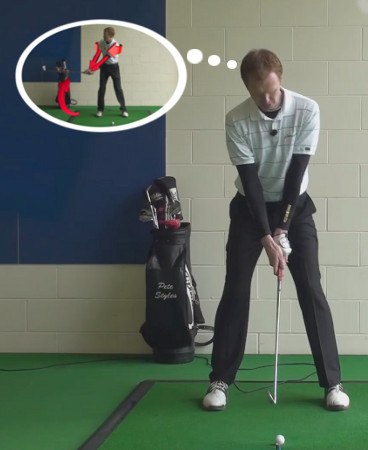You're Correct!

Stage fright. Butterflies. The heebie-jeebies.
Everybody gets ’em on the first tee, even veteran tour pros. There’s no point trying to make them go away, because it can’t be done. But you can learn to perform well when stress strikes – even harness the nervous energy to your advantage.
For amateur golfers, few moments are as nerve-wracking as the day’s first tee shot, especially if we’re playing with unfamiliar partners or – the ultimate terror – there’s an audience of strangers milling about. Many deal with this through self-deprecation, saying things like, “Here comes my first topped shot of the day.” Others make a feeble, preemptive excuse along the lines of, “Man, my back is stiff this morning.”
In other words, they lower expectations. And usually fail to exceed them.
There’s a better way to manage jitters – on the first tee or elsewhere – that greatly improves your odds of succeeding. It’s called the “process vs. outcome” approach.
In a nutshell, a process vs. outcome approach involves focusing strictly on the steps required to complete the task at hand – in this case, hitting a golf ball to a specific target. Since we can only think of one thing at a time, this prevents you from pondering the possible outcomes of the shot. Put another way, it’s about controlling the things you can control, such as your alignment and takeaway, and letting the chips fall where they may once the ball leaves the clubface.
Of course, adhering to a process vs. outcome approach requires having an actual, repeatable process. That means developing a consistent pre-shot routine. Every single pro on earth, and your typical low-handicap amateur, employs a pre-shot routine. This not only helps when you’re under duress, it greatly aids shot-to-shot, round-to-round consistency.
While no two golfers share the exact same pre-shot routine, there are a few elements everyone’s should include:
Choosing a target
Aligning yourself and the club to the target (Jack Nicklaus’ technique works great)
Building the stance (foot placement, grip, knee bend etc)
A “go” key (i.e., a thought or move signaling you to start the swing)
Your pre-shot routine should never vary, no matter the length or type of shot you’re playing. In other words, it should be the same for a chip shot as it is for a drive. You should even use it during practice, going through the same steps for each and every ball you hit. Eventually, your routine will become a habit, happening naturally without you even thinking about it.
Next time you’re watching a professional tournament, pay attention to how the players prep for each shot. If you want a role model for your own routine, you can’t go wrong following Steve Stricker’s example.
Is he nervous out there? Of course he is. But because he’s wrapped up in his process, not the potential outcome of the shot, Stricker succeeds far more often than not.
Golf, as the great Bobby Jones once said, “is played mainly on a five-and-a-half-inch course – the space between your ears.” Here are five more tips from our Mental Side of Golf library that’ll help turn your brain into an asset, not a liability:
Jack’s and Tiger’s Mental Approach to Golf
Visualize Golf Shots to Banish Mechanical Thoughts
Sorry Try Again! - See Explanation Below
Pretty obviously, caffeine will only add fuel to your jangling nerves. So lay off the coffee and cola, opting for water, all-natural fruit juice or a sports drink instead. Some golfers find it helpful to mellow out with some soothing pre-round tunes; a leisurely, unhurried warmup sets a calming tone, too.
Sorry Try Again! - See Explanation Below
Um, no. Actually, slow, deep breathing is a tried-and-true relaxant to use during any stressful situation (giving a speech, for example). It supplies the blood with much-needed oxygen and combats the tension which invades your chest, arms and hands.
Sorry Try Again! - See Explanation Below
This is exactly the kind of outcome-centered thinking that gets us in trouble. If you allow yourself to picture hitting a dribbler or a massive slice, there’s a good chance you’ll do just that. Instead, visualize pounding a drive straight down the middle to the oohs and ahs of your partners and assorted onlookers. Then settle into your pre-shot routine and make it happen.







